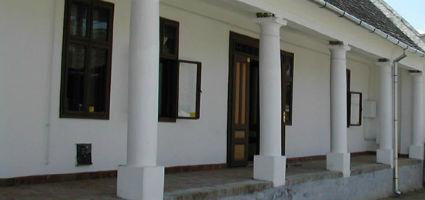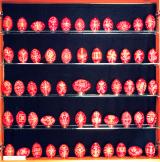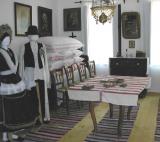2024. April 20. Saturday
Bata Region House - Báta
 |
Address: 7149, Báta Fő u. 86.
Phone number: (74) 490-558, (20) 576-4130
E-mail: batai.tajhaz@gmail.com
Opening hours: Tue 8-12, Thu, Sat 13-17
|
The village of Báta can be approached from road no. 46 in Tolna County. It is 34 kilometers from Szekszárd, 19 kms from Mohács. The village is in the south corner of Sárköz where the Danube and Sárköz meet. Its region was a flood area until the regulation of the Danube. The forest of Gemenc is around the village. The region is rich in wild animals; the eagle and the black stalk are protected animals of the region.
The Celtics and later the Romans occupied the settlement. After the original settlement, King Saint László founded an abbey here to convert the Besenyő, the Turkish speaking nomadic ethnic group. In its past of over nine hundred years, the real history of our nation is faithfully present. The people living in the village have always preserved their nationality and their catholic religion, even when settlers of other ethnicity arrived to the area and the Hungarians of the Sárköz joined the Reformation.
The country house was built at the end of the 19th century. Its crest is perpendicular to the street, it has a span roof. There are two windows on the wall facing the street and one additional, which is a dummy window. It was only built in to keep the symmetry.
The porch is placed on seven white brick poles. Entering the first door we enter the 'choked' kitchen, turning right we enter the clean room, the third room is the door of the house. Entering the second door from the porch, we find ourselves in the kitchen. The third door also leads to the kitchen, where the furnace of bread baking and the stove are kept in their original states. In the courtyard a typical granary the so-called "góré" and a coach shed, a barn, and a press house are located.
The house was built by Mihály P. Sümegi, farmer, and was owned by his descendants until 2001. <bry
The Celtics and later the Romans occupied the settlement. After the original settlement, King Saint László founded an abbey here to convert the Besenyő, the Turkish speaking nomadic ethnic group. In its past of over nine hundred years, the real history of our nation is faithfully present. The people living in the village have always preserved their nationality and their catholic religion, even when settlers of other ethnicity arrived to the area and the Hungarians of the Sárköz joined the Reformation.
The country house was built at the end of the 19th century. Its crest is perpendicular to the street, it has a span roof. There are two windows on the wall facing the street and one additional, which is a dummy window. It was only built in to keep the symmetry.
The porch is placed on seven white brick poles. Entering the first door we enter the 'choked' kitchen, turning right we enter the clean room, the third room is the door of the house. Entering the second door from the porch, we find ourselves in the kitchen. The third door also leads to the kitchen, where the furnace of bread baking and the stove are kept in their original states. In the courtyard a typical granary the so-called "góré" and a coach shed, a barn, and a press house are located.
The house was built by Mihály P. Sümegi, farmer, and was owned by his descendants until 2001. <bry
|
Programmes
|
|

